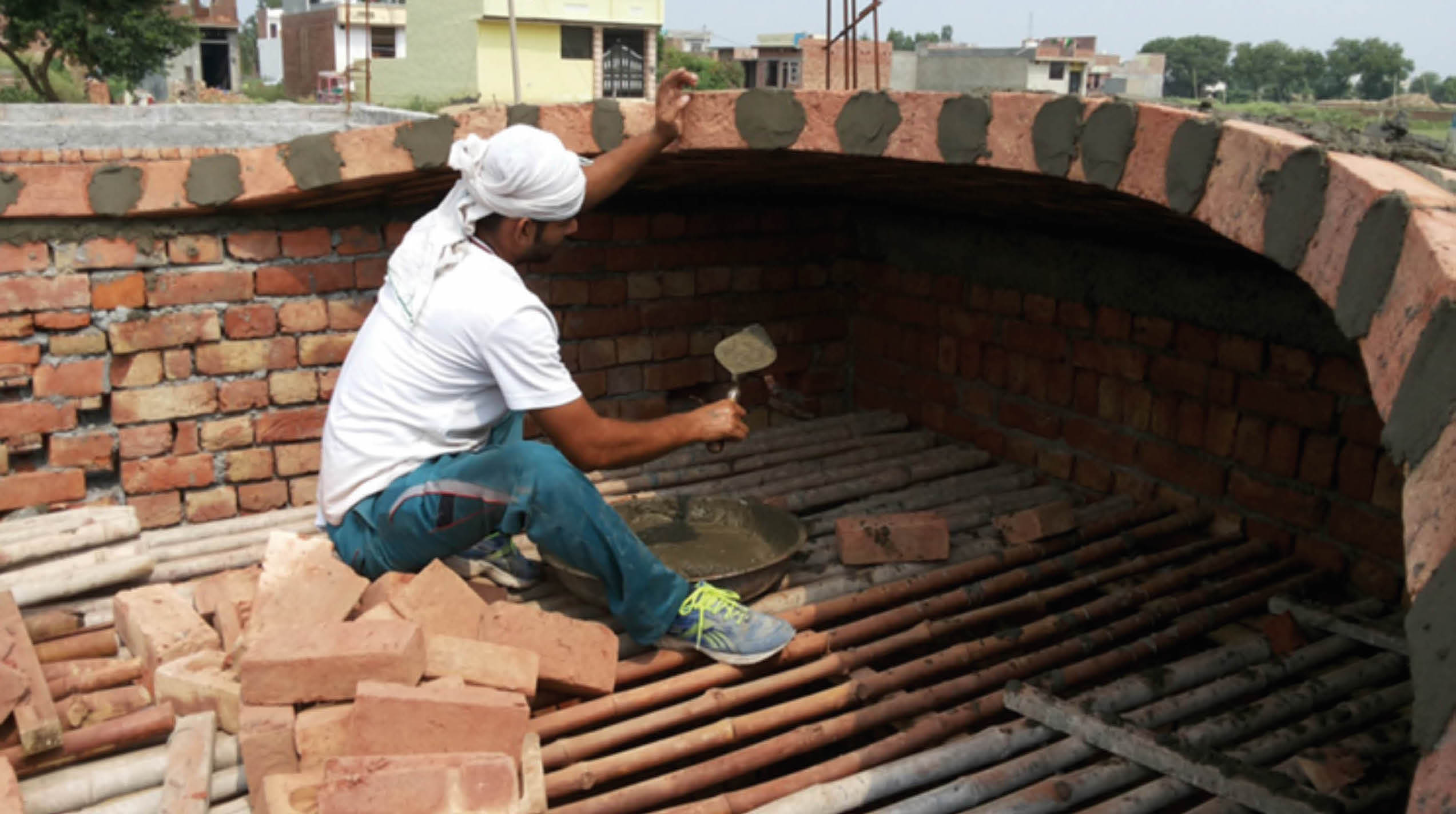
History
The construction of masonry domes and vaults started together in India. However, the use of domes and vaults became popular during the reign of the Mughals. The building technique started parallel in the north with the construction of Qutub Complex in Delhi and the buildings of the Bahamani Kingdom in the south. Each region further developed their own techniques, which were widely used by both Hindus and Muslims.
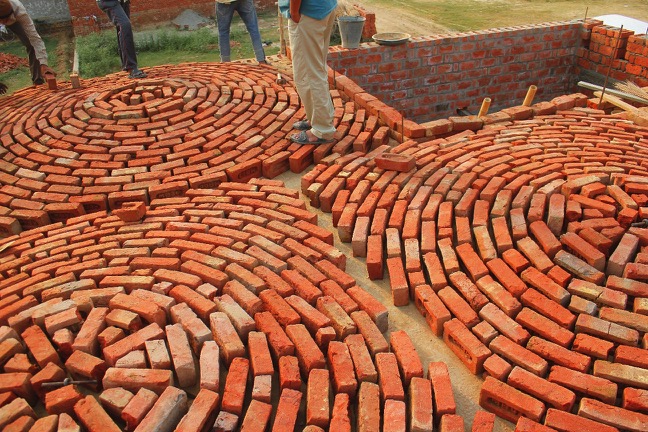
The tradition of building these domes is passed through the ‘Ustaad-Chela’ (Master-Student) system.
The technique of masonry shallow domes also developed along the lines of other domes and vaults. The oldest shallow dome found in western Uttar Pradesh and Haryana is around 400 years old, built in lakhauri bricks with lime mortar. The rise of the dome varies from 9 inches to 2 feet. A team from Hunnarshala visited this building during the rehabilitation of the riots affected people of Muzzaffarnagar. Nawab, a house owner in the rehabilitation program and an artisan who specializes in the construction of shallow domes introduced the technique of building these domes.
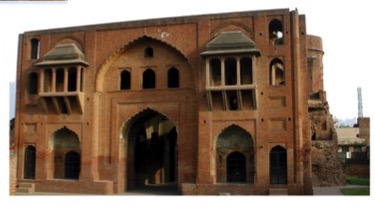
The tradition of building these domes is passed through the ‘Ustaad-Chela’ (Master-Student) system. The chela learns about the technique with the master and only when the master thinks that the chela is ready, he can individually construct the dome. Once the student starts constructing the domes, he further experiments with the technique to develop his own signature style. The technique has gone through several changes through the time, as new materials like cement and steel gained recognitions, which impacted the aspirations of the people. The general aspirations tilted towards having at roofs. The artisans were able to reduce the rise by using ties and also reduce the thickness of the wall required by using a ring beam.
Process of Construction
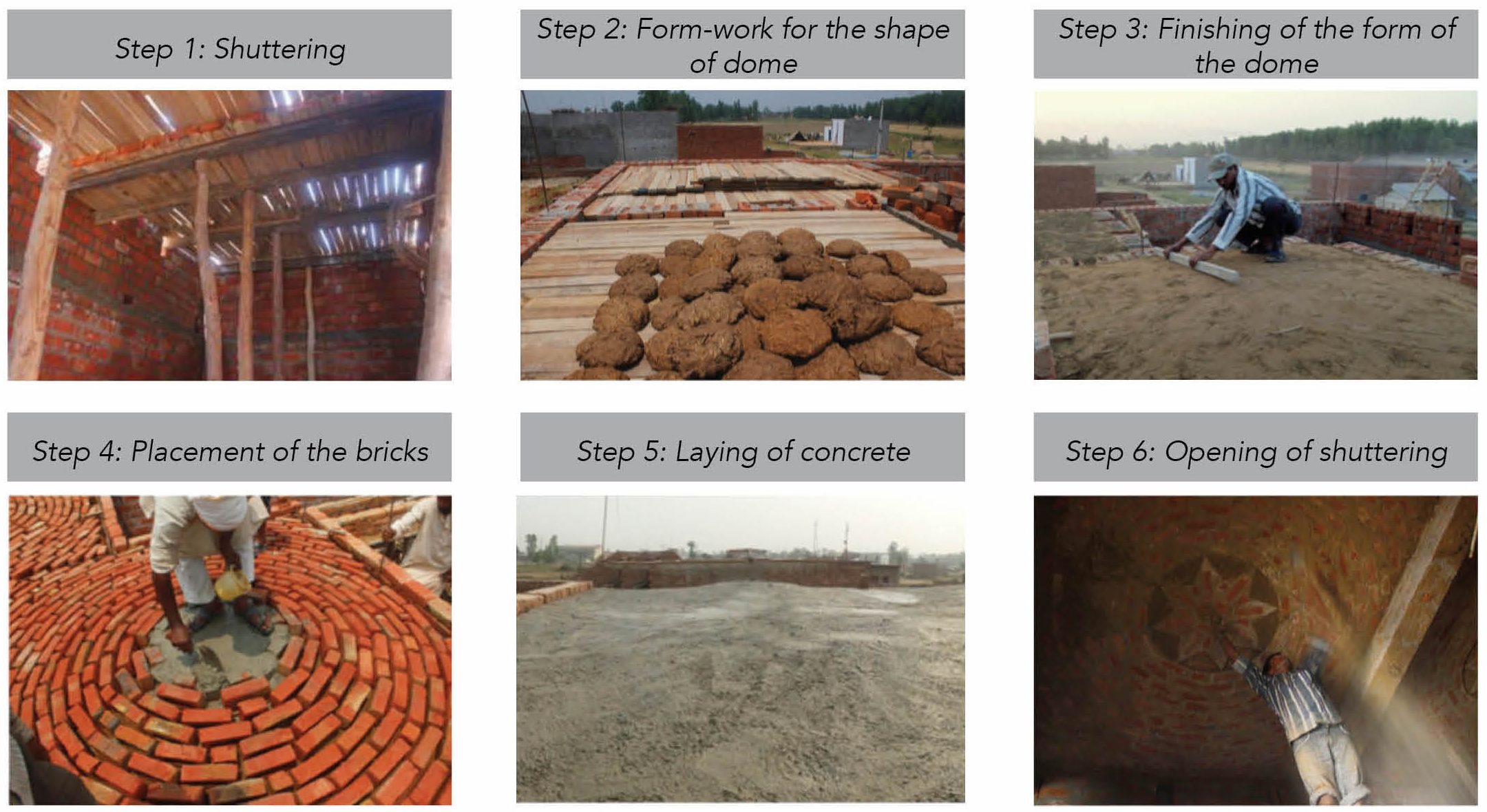
Current Practices
There are two types of shallow masonry domes, which are presently built in western U.P. and Haryana, dish type and the tray type. Two distinct methods, one with shuttering and one without shuttering are used to build these domes. In the villages of Uttar Pradesh, the masons use shuttering method for building the domes and produces variations in the dome using the same. Nawab, an artisan from the same region makes dish type domes and pours concrete in the joints where as Salim, another artisan makes tray type domes with rich cement mortar. Maumin, on the other hand makes both dish and tray type domes using rich cement mortar.The domes rest on walls built in mud mortar and is supported on a ring beam with a 12 mm dia bar.
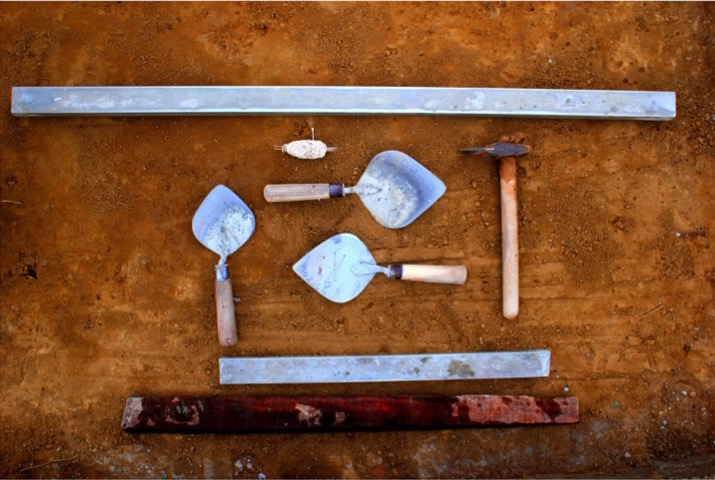
In Haryana, the artisan’s building method differs. Narayan, and his family make dish type shallow domes without shuttering with rich cement mortar. The ring beam supports it, which is an L beam with six 12mm dia bars. The dome also rests on walls built in cement mortar and the artisans refrain from building mud mortar walls unless they are at least 2 feet thick.
…with this agenda, Hunnarshala Foundation along with BMTPC and Development Alternatives organised a workshop, “Alternative Traditions in Roo ng Systems-A consultation on Shallow Masonry Domes” in New Delhi on 21st July 2016.
Apart from these artisans, many architects and engineers have started to explore this technique. Prof. Yogananda contructed dish type dome in a residential building in Bangalore after understanding the technique in Muzzaffarnagar. The shallow dome was built in CSEB using a curvature template. Another architect, Laurent Fournier is using the shallow domes in different ways. He is collaborating with Nawab for “The Institute for Indigenous Food and Culture” in Odisha where they are using shallow masonry domes as floor slabs and inverted shallow domes in place of strip foundation.
Scientific Validation
Two tests were conducted in the Hunnarshala campus with the support of Mrinmayee, Bangalore to understand the behavior and strength of the dome by subjecting it to static loading. Nawab, an artisan from Muzzaffarnagar who has been making the shallow domes was called to make these domes. The data generated from the first test was analysed and subsequent alterations and changes were made to the dome before testing it the second time. This shallow dome built with Compressed Stabilised Earth Blocks (CSEB) took ve times the live load stated for residential buildings and would now be tested for dynamic loading.
Taking Shallow Domes Forward
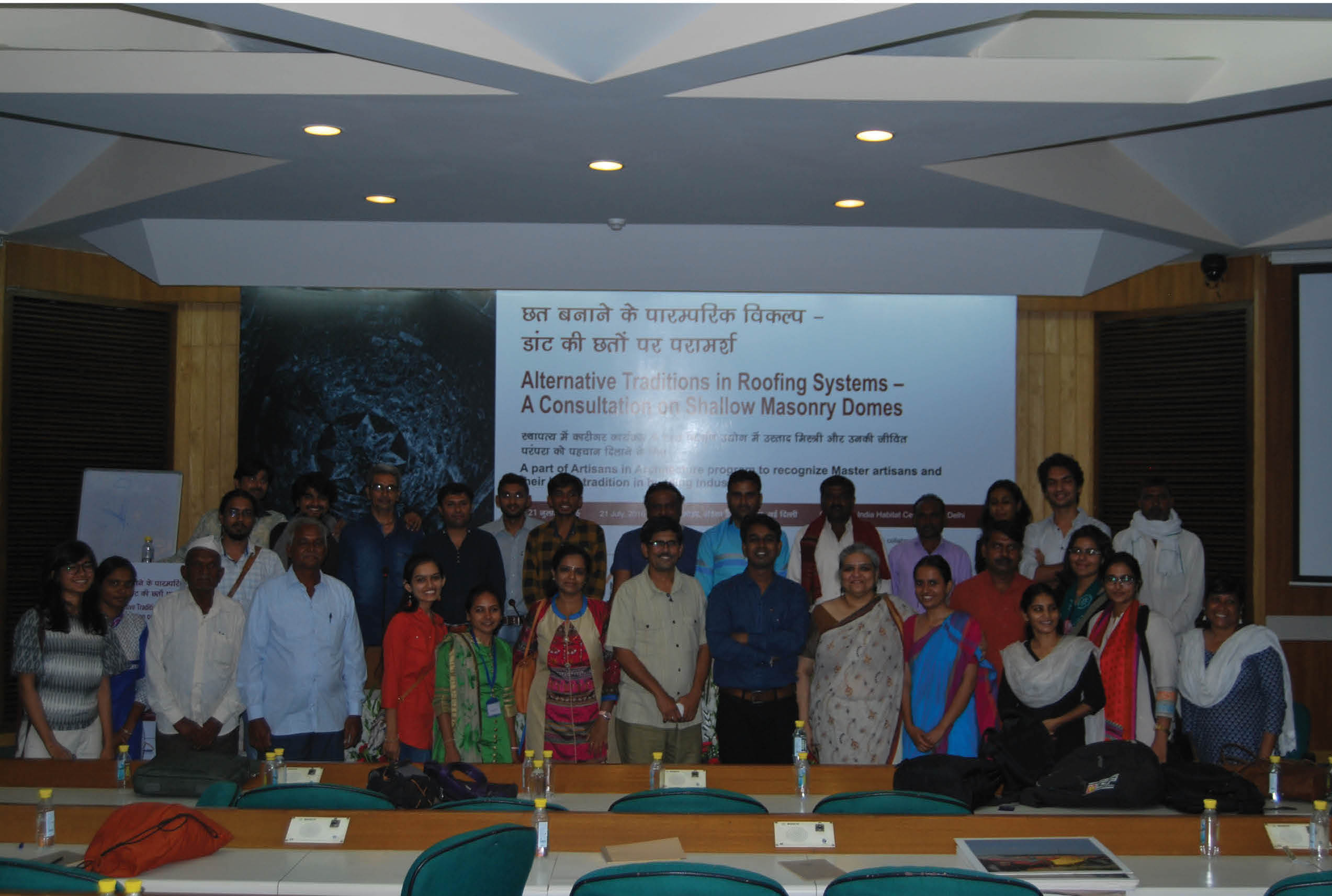
Shallow Masonry domes can be a possible sustainable alternative to R.C.C slabs, which use more steel and cement. They are an excellent example of a roo ng system that is stable and has low carbon footprint. The application of shallow domes has been limited to rural areas and its potential in the urban context has not been explored much. As India looks forward to meet the enormous housing shortage in the next few years, shallow domes can play a huge part in meeting this demand.
Architect, Laurent Fournier is collaborating with Nawab for “The Institute for Indigenous Food and Culture” in Odisha where they are using shallow masonry domes as floor slabs and inverted shallow domes in place of strip foundation.
With this agenda, Hunnarshala Foundation along with BMTPC and Development Alternatives organised a workshop, “Alternative Traditions in Roo ng Systems-A consultation on Shallow Masonry Domes” in New Delhi on 21st July 2016. The main aim of the consultation was to bring together the larger community of construction practitioners, including engineers, architects, academicians and artisans to unlock the potential of this building technique. Many practitioners including Prof. K.S. Jagadish, Zeenat Niazi, Ashok B. Lall, Dr. Yogananda, Laurent Fournier, Satprem Maini, etc gave presentations on various aspects of domes. Artisans from western UP and Haryana were also invited to talk about their current practices and challenges. Many ideas were discussed on taking the shallow domes ahead in the mainstream construction. Various possible collaborations amongst practitioners and artisans were discussed with the objective of taking the technique of building shallow domes forward.
The workshop was also the first in “Artisans in Architecture” series to bring the contribution of artisans in architecture, to the forefront. Artisans through centuries have been keeping building traditions alive. These building traditions are deeply rooted in the geographical and social context of our country and therefore must be preserved, validated and improvised for future.
Author:
 Bhawna Jaimini is an Architect and Journalist from New Delhi who is currently working with Hunnarshala Foundation for Building Technology and Innovation in Kutch, Gujarat, where she is working with slum communities for their rights and services. She has written and edited for various national journals and currently writes for an international journal on green architecture, FuturArc, based in Singapore. Her interest lies in exploring the socio-political impact of architecture and how it can be used as a tool to empower marginalised communities.
Bhawna Jaimini is an Architect and Journalist from New Delhi who is currently working with Hunnarshala Foundation for Building Technology and Innovation in Kutch, Gujarat, where she is working with slum communities for their rights and services. She has written and edited for various national journals and currently writes for an international journal on green architecture, FuturArc, based in Singapore. Her interest lies in exploring the socio-political impact of architecture and how it can be used as a tool to empower marginalised communities.


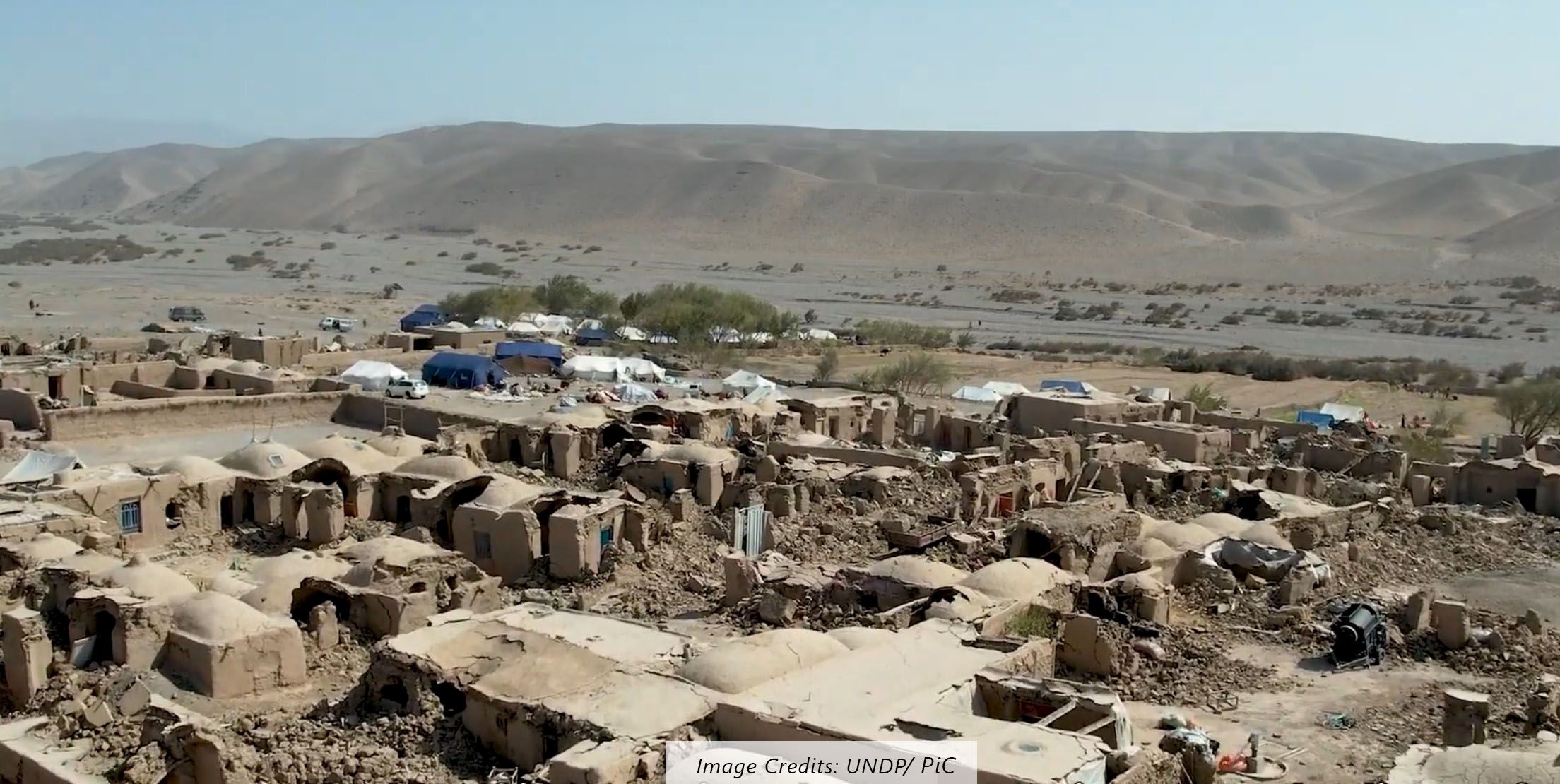
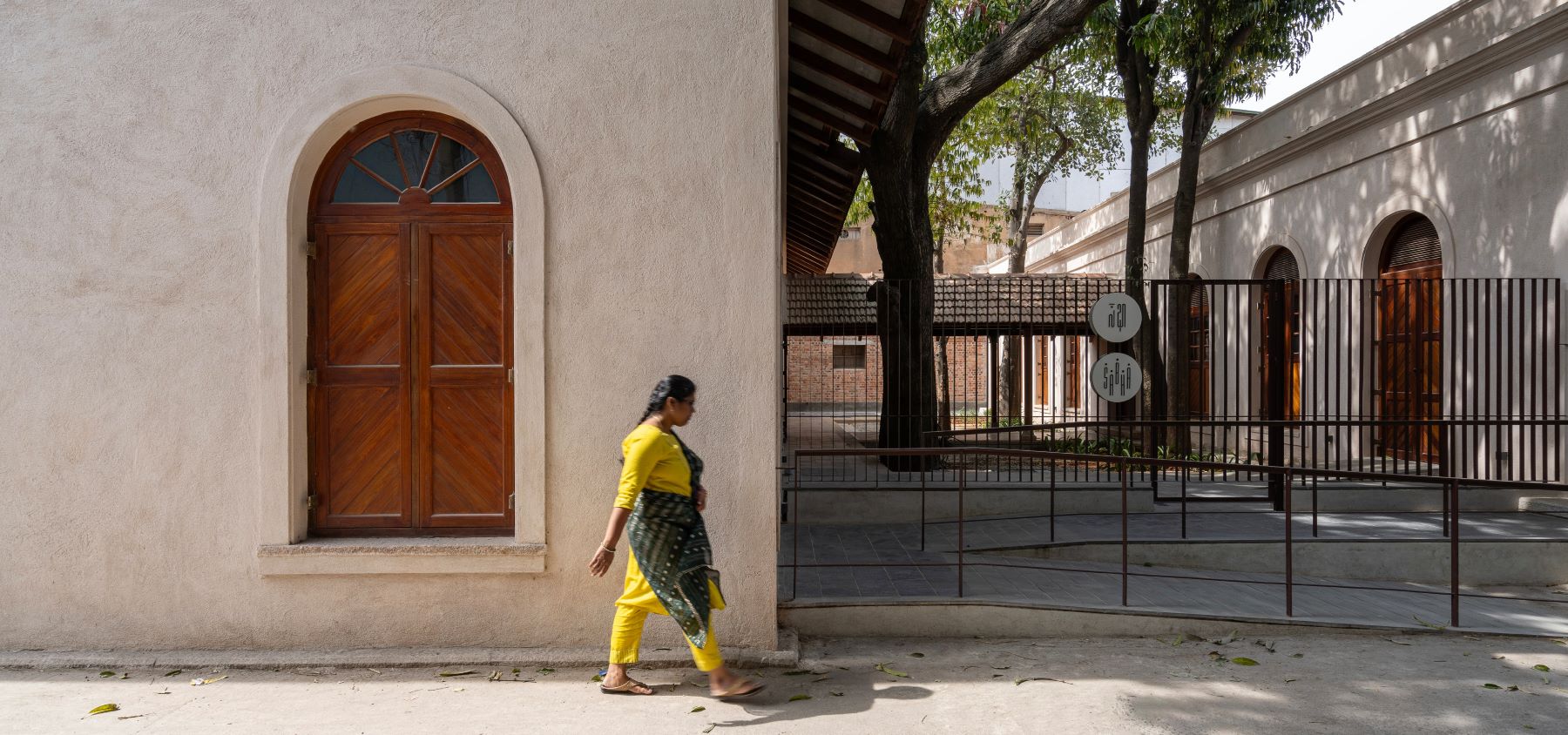

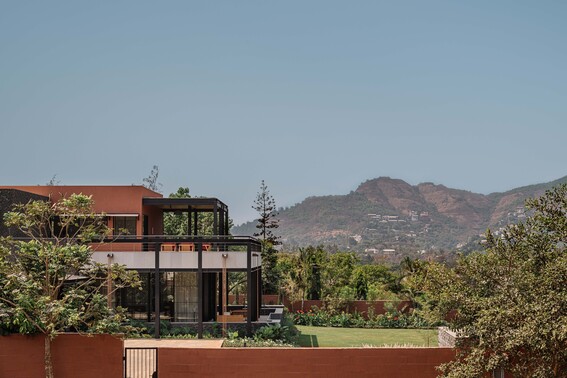

2 Responses
A wonderful read.. great to know that such ustaads exist and the method is alive. How does one get in touch with Nawab. Deeply grateful for your help.
Regards,
Vtarchitect
Good read. My firm kham design from bangalore is also exploring similar systems including dry masonry vaults and domestic. funicular shells etc.
Would love to share some images if possible.